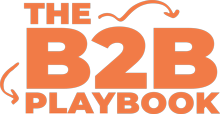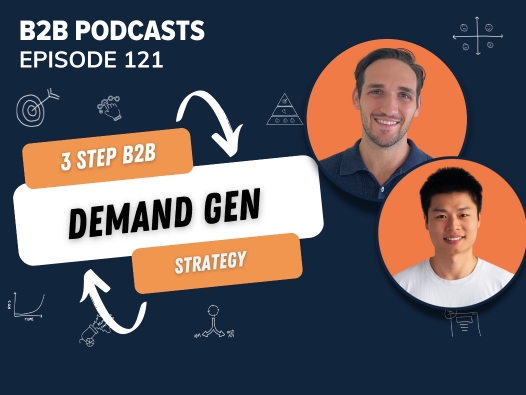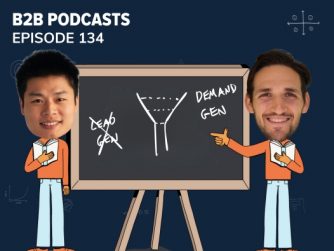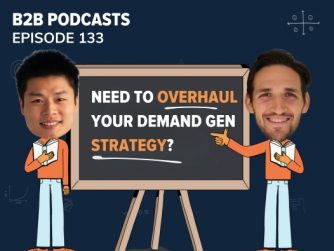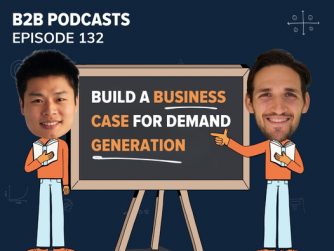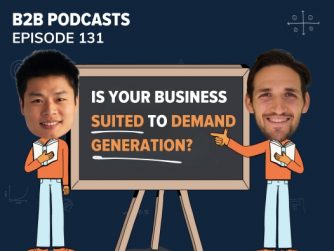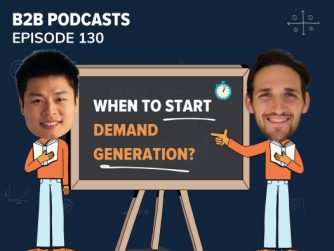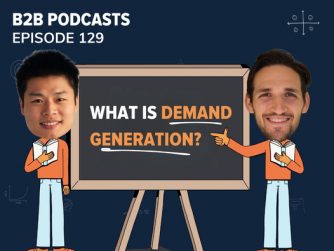Demand Generation can be seen as a complicated subject. Some get it confused with lead gen, others with brand marketing. And that leaves many marketers feeling confused about their demand gen strategy.
We’re here to simplify things, and to give you our simple 3 step strategy that you can follow and apply to your business this year.
So if you want to learn all about demand generation and the strategy you can use to drive pipeline and revenue in your business, you can watch, listen or read the main points from our conversation below.
Listen To The Episode
Watch The Episode
Defining Demand Generation: Demand Capture vs. Demand Creation
Demand generation is made up of two critical key components: Demand Creation, and Demand Capture.
Demand Capture is activities that targets the 3% of people who are in your market that are ready to buy right now. It’s where most marketers focus their efforts on early in an organisation – and for good reason! They’re the prospects that are closest to purchase.
It’s the marketer’s job to efficiently turn those ready buyers into paying customers.
Demand Creation on the other hand focuses on the other 97% of the market who aren’t in ‘buy mode’ right now. They’re much earlier in their purchasing journey, potentially starting to explore the problem that you can help them fix – or even totally unaware they have a problem to begin with.
Marketing to these prospects is the key to scaling any organisation because you develop a relationship with them prior to them entering ‘buy’ mode. The key here is to build relationships with them, make them aware of their problem, and lead them to the conclusion that your product is the best fit for them.
Why Balance is Critical with Demand Generation
Relying entirely on demand capture is risky and limited. I’ve experienced the pain first hand of being part of an organisation that only focussed on demand capture.
Herein lies the issue:
“If you’re just capturing demand You’re just competing for that 3 percent of the market that isn’t necessarily expanding and the competition is often increasing. As you try to grow and take up more of that 3%, your acquisition costs keep going up, and it becomes unsustainable.”
George Coudounaris – The B2B Playbook
As a former performance marketer, the 3% in-market was all I targeted with Demand Capture. The channels we ran to target high-intent, lower funnel prospects just couldn’t scale profitably (like Google Ads and review sites like G2 and TrustPilot).
As we grew and tried to take a bigger slice of that 3%, so were our competitors.
The result?
It’s like being in a swimming pool full of fish, but more and more sharks are added in. It’s a bloodbath.
What I needed to do was create demand too. That means build a relationship with the rest of the market before they’re ready to buy. So when they were ready, we’d already built that trust with them and they’d come straight to us.
Our 3-Step Framework for Demand Generation in 2024
Sharing our simple Framework for Demand Generation is what we do, every week on The B2B Playbook podcast. But we’re going to take you through an overview of the 3 key steps to it here.
Step 1: BE Ready – Deeply Understand Your Best Customers
This first step is about doing the hard work, and building the foundations for a very strong demand generation program.
A great demand generation program builds relationships with its Dream Customers, earns their trust, and leads them down a path to purchase from you.
“It’s really about truly, deeply understanding your customers…You need to know who your best customers are…where they hang out, and who influences them.”
George Coudounaris – The B2B Playbook
In order to build those relationships, we have to deeply understand our customers first! But not just any customers – you want to focus in on your best customers. The ones that fit your business like a glove, and that if you won more of them would help you meet your revenue goals.
That means running 80/20 analysis on your business, and then interviewing your top customers to find out:
- why you were such a great fit for them
- what their pains and anxieties were
- how you helped remedy these
- what triggered their search for a solution like yours
As well as information about what their buying committee looks like, who influences them and their purchasing decisions, and any other criteria that you need to meet in order to work with them.
From there the process is repositioning your business so it’s a ‘no brainer’ for your Dream Customer, and updating your messaging to reflect that across your assets.
You then want to map the buying journey, and create your ‘Dream 100’ to see where your Dream Customers hang out online and offline so you know where to go to influence them.
Now you should have a great roadmap of who you’re targeting with your demand generation, what’s important to them, what you need to say to them, and where you need to go to influence them.
Step 2: BE Helpful – Build Relationships with Content
The goal of this second stage is to focus on developing relationships with your potential customers by providing helpful and educational content. The key here is to make sure the content resonates – and that means it needs to be driven by true subject matter experts.
“Share ‘helpful and educational content…driven by true subject matter experts.’ This stage is all about providing genuine value – not product pitches.”
George Coudounaris – The B2B Playbook
Here are a few additional tips for making this stage successful:
- Create content that is truly customer-centric. Don’t just talk about product features and capabilities. Truly aim to make your customers’ lives easier and solve their problems. Show that you empathize with their pain points.
- Define your ‘editorial mission’ first to make sure your content has a consistent theme and a point of view.
- Use Subject Matter Experts – either internal or external to the business – to help you create content. You need to make life as easy as possible for them to contribute to content.
- Use our ‘Content Repurposing’ framework to cut down your weekly content production time to 4-5 hours. That’s how long it takes us to do: 1 x YouTube video, 1x podcast, 12 x YouTube shorts, 1x newsletter, and 3x articles per week.
You can learn more about how we do this with our Content Repurposing framework here. - Measure the leading and lagging indicators of success for Demand Generation. We go into detail as to what these are and what your KPIs should be here.
- Use our favourite demand generation content framework that maps the buying journey: The 5 Stages of Awareness.
Read in detail about The 5 Stages of Awareness here.
Step 3: Be Seen – Accelerate with Paid Media & ABM
Now we have our fundamentals in place in stage 1 and 2, and we’re building relationships with our Dream Customers…
How do we make that go faster?
Enter: paid media and account based marketing.
You can use paid media in B2B to guarantee the distribution of your helpful content and your product ads to the buying committee of companies you’re targeting.
(P.S. if you want to create Product Ads that are still super helpful, we give you a guide to doing that here).
At this stage you can also setup and run a low-cost Account Based Marketing (ABM) program for companies that are showing intent, but aren’t explicitly raising their hand for a demo or contacting you.
We did a mini-series on Account Based Marketing and how to get started here on a shoestring budget. Check out the episodes here:
- What is ABM and who is it for
- Defining your ABM targets
- Positioning and Messaging for ABM
- How to ‘Warm Up’ Accounts with Playbooks
- How to ‘Activate’ Accounts to Get Them to Buy From You
- Working with Sales and Reporting on your ABM Campaigns
Proof This Strategy Works
This is the exact strategy that we used to generated a 38×1 ROAS from a small investment. We detailed this campaign in full for everyone to see.
We also have lots of success stories from marketers who listen to our podcast, and write to us to tell us that this strategy has helped them drive more pipeline as marketers for their business.
And of course – plenty of success stories from marketers that go through our Demand Gen program: The B2B Incubator.
This is a program that gives B2B marketers the strategy, templates and tools to execute the above strategy in 12 weeks. You also get live consultations with myself to ensure you’re implementing the strategy correctly.
Ready To Start Implementing The Framework In Your Business?
If you’re ready to implement our tested framework in your business, we have two ways for you to do it:
- The [free] slow way by listening to The B2B Playbook podcast, or
- The [paid] FAST way by joining The B2B Incubator and implementing the strategy in 12 weeks with a small cohort of likeminded marketers
